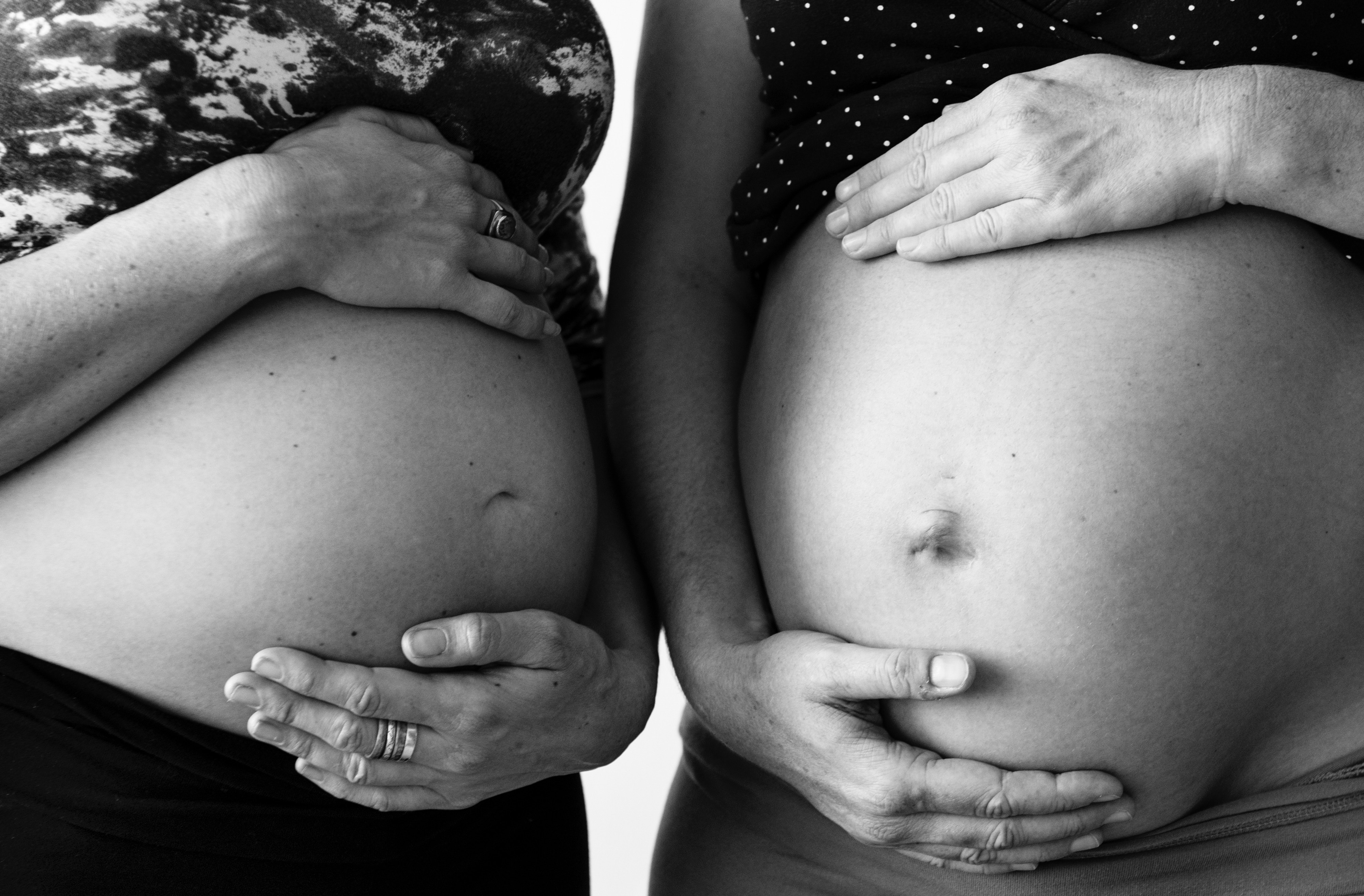Epidurals in Labour ~ Part 2
This article is published in two parts. The first part will guide you through the medical aspects of the epidural and its history. We also give you some information on epidural use here in Italy as it might differ from what you are used to from your home country.
This second part discusses the benefits of this type of pain medication along with its possible risks. We also go deeper into controversial topics such as if epidurals might affect mother-baby bonding and breastfeeding, and whether choosing an epidural may give you a better chance of having the happy birth you most likely are seeking.
As always, remember this article is not to be considered as clinical medical advice. If you have any doubts or questions make sure to discuss them with your gynecologist or midwife, as they are the ones who understand your personal circumstances and health history.
PART TWO
Epidural Benefits and Risks
Today epidurals are considered to be safe for both mother and baby. It’s important to note that, while risks mentioned in this article exist, they’re considered rare.
Most women can have an epidural, although women who have had back surgery, heart or blood disorders, or could be allergic to the drugs administered, need to take extra precautions and carefully discuss the procedure with their health care provider. The risks and benefits of an epidural vary from person to person, but here is some general information about common benefits and risks. (1)
Benefits:
- The main benefit of an epidural is that it can be a very effective pain reliever during the birth process. If a woman is experiencing extreme pain this can certainly be stressful for her, and because of the pain relief an epidural offers, it can reduce stress hormones present in the laboring woman’s body. Very high levels of stress hormones can slow labor progress, thus in these cases an epidural can help in advancing the labor. (2)
- Effective pain relief can allow the woman to rest during the labor, which can be helpful in case of an extremely long or especially painful labor. By getting a break from the discomfort of contractions the woman may be able to relax and get more focused so she can move forward as an active participant in her birth experience. (3)
- The epidural has shown to offer better pain relief than other pain relief methods such as IV opioids. The epidural is said to take away up to 80 percent of the sensation of pain.
- A successfully administered epidural only removes some of the feeling in the lower parts of the body; a laboring woman can still feel other body parts and can normally remain fully awake, alert and ideally, mobile.
- During a caesarean, birth an epidural allows the woman to be awake during birth, and thus able to see and hold her baby soon afterwards. This can help with both bonding and breastfeeding. (4)
- Compared with “general anesthesia”, an epidural during a C-section exposes the woman to a lower level of drugs/pharmaceuticals.
- Having the option of an epidural has been psychologically beneficial for women who have very negative expectations going into childbirth.
- A labour that is induced using synthetic oxytocin tends to be more painful as the labour is sped up and the body does not have time to acclimate and produce the naturally occurring pain relief hormones. Therefore epidurals in these situations can greatly reduce unnecessary pain and trauma.

“The main benefit of an epidural is that it can be a very effective pain reliever during the birth process.”
Main Risks – Mother:
- Possible side effects of an epidural are low blood pressure, and a feeling of being sick and nauseous although feeling sick is common also during an unmedicated birth. To prevent low blood pressure additional IV fluids and medication is often given to the laboring woman.
- A woman given an epidural will need blood pressure monitoring, pulse monitoring, extra IV fluids and a bladder catheter which limits her ability to move freely during labour.
- Some women report itchy skin that cannot be relieved by antihistamine, such as Benadryl, this is because the itch comes from the central nervous system. There can also be discomfort of the skin where the epidural was inserted and sometimes this area can become infected.
- Less than 2 percent of women will suffer a “post dural headache” that can be very painful. Also fever and urinary retention or loss of bladder control are known possible side effects. To help with the loss of bladder control, a catheter is usually inserted.
- Although very rare, sometimes an epidural can cause temporary nerve damage, and in very rare cases this nerve damage will be permanent.
- An epidural can also cause slow maternal breathing and again in extremely rare cases, seizures and severe breathing difficulties. Death is however very rare. Actually, a study looking at pregnancy related deaths associated with complications of anesthesia (general anesthesia included) in the US during the time period 1991-2002 showed 85 deaths. However, all of these deaths occurred with a Cesarean, there were zero recorded deaths from epidural use during a vaginal birth. (5)
- As mentioned above, epidurals can reduce a laboring woman’s stress levels. However, this can also be negative as some degree of stress during the birth process is actually beneficial for both mother and baby. For example the stress hormone cortisol contributes to a new mothers feeling of euphoria, which helps her to bond with her new baby. For the baby, the “stress of being born” facilitates biological processes that assist with things such as breathing at birth.
- Epidurals are known to affect a woman’s natural birthing hormones. These hormones, if not disturbed, are calming, pain relieving and stress-reducing and are there to make labor and delivery as easy, safe and satisfying as possible.
 One especially important hormone is oxytocin. (read our more in-depth blogpost about oxytocins role in labor here. In short, in an intervention free labor, oxytocin triggers uterine contractions, which in turn send signals to the brain to release more oxytocin and endorphins the natural pain killer, creating more contractions while reducing pain and so on. This cycle strengthens labor, and the oxytocin release also turns on reward and pleasure centers in the brain during labor and birth. With an epidural these labor sensations may however beentirely abolished. That might sound very convenient, but unfortunately when the oxytocin-uterine cycle is disturbed with the epidural drugs labor commonly slows or even stops. This is why often synthetic oxytocin, Pitocin in the U.S, is given to make up for the loss of your own oxytocin. (6)
One especially important hormone is oxytocin. (read our more in-depth blogpost about oxytocins role in labor here. In short, in an intervention free labor, oxytocin triggers uterine contractions, which in turn send signals to the brain to release more oxytocin and endorphins the natural pain killer, creating more contractions while reducing pain and so on. This cycle strengthens labor, and the oxytocin release also turns on reward and pleasure centers in the brain during labor and birth. With an epidural these labor sensations may however beentirely abolished. That might sound very convenient, but unfortunately when the oxytocin-uterine cycle is disturbed with the epidural drugs labor commonly slows or even stops. This is why often synthetic oxytocin, Pitocin in the U.S, is given to make up for the loss of your own oxytocin. (6)
- Studies show that laboring women given epidurals more often need synthetic oxytocin to augment their labor compared to women birthing without this kind of pain relief. The synthetic oxytocin is known to increase the risk of abnormalities in the baby’s heart rate that indicates fetal distress.(7)
- Also the epidural drugs themselves lead to an increased risk of fetal distress. (7)
- Studies have also shown that when an epidural is used it is more likely that forceps or a vacuum have to be used to deliver the baby, thus there is a higher risk of more severe vaginal tears.
- A large body of evidence shows that epidurals increase the length of the pushing phase of labor. (8)
- The impact of epidurals on the risk of C-section is still controversial. Some studies show no increased risk while others show that the risk for a c-section increases significantly. The risks seem to vary a lot from hospital to hospital based on individual operating procedures.
- The C-section risk seems to increase for women having an epidural during the birth of their first baby. (9)
Main Risks – Baby
- A drop in mother’s blood pressure can compromise the transfer of oxygen to the baby.
- The opioids in an epidural can cross the placenta and reach the baby. This increases the risk of receiving abnormal fetal heart tracing, low APGAR scores, difficulties with breathing and poor muscle tone. However, the effects are less severe when an epidural is used compared to when IV opioids (administered through a vein) are used. This is because when IV drugs are used, more of the drugs reach the baby.
- As the risk for maternal fever is higher with an epidural, the risk is also higher for the baby to have a fever. This is because the maternal fever might affect the baby’s temperature. (10)
- An epidural paralyses the woman’s pelvic floor muscles, and because these muscles are important in guiding the baby’s head into a good position for birth, the baby has an increased risk of ending up in a more complicated position in the final stages of labor. This increases the risk for an instrumental delivery.
- As the risk for an instrumental delivery increases so does also the possible side effects of this kind of intervention on the baby; for example short-term bruising, facial injury, displacement of the skull bones, and cephalohematoma (blood clot under the scalp). (11)
Epidurals effect on bonding and breastfeeding
Could epidurals affect the initial bonding between mother and baby? There has unfortunately not been enough research in this area and it is therefore difficult to give an adequate answer to this question. Some research suggests that due to the disruption of natural birthing hormones, women who have an epidural can have an increased risk of finding it more difficult to bond with their baby. Studies have shown that women exposed to epidurals during labor would describe their babies more negatively at the age of one month. These studies does not imply that women who had an epidural will be negatively impacted in their mothering, more that the epidural might have reduced the a “head start” they might have experienced if they would have had a birth without the epidural drug. It could be explained as a “hormonal gap” and this gap could potentially disrupt the joy and reward the mother experiences with her newborn baby. This hormonal gap can however be filled in by making sure the mother undertakes activities that naturally stimulate hormonal release after birth, such as plenty of skin-to-skin contact and receiving breastfeeding support. (13)
 And what about breastfeeding? This is also a controversial subject. Potentially by having an epidural, drugs could cross the placenta and suppress the reflexes of the newborn such as the sucking reflex and alertness. In cases where the epidural causes maternal fever that also leads to a feverish baby the fever can result in a sluggish baby that is not up for breastfeeding. Another way the epidural could interrupt breastfeeding is as the epidural increases risks for more severe vaginal tears, and repairing these tears may delay skin-to-skin time that is important to initiate breastfeeding.
And what about breastfeeding? This is also a controversial subject. Potentially by having an epidural, drugs could cross the placenta and suppress the reflexes of the newborn such as the sucking reflex and alertness. In cases where the epidural causes maternal fever that also leads to a feverish baby the fever can result in a sluggish baby that is not up for breastfeeding. Another way the epidural could interrupt breastfeeding is as the epidural increases risks for more severe vaginal tears, and repairing these tears may delay skin-to-skin time that is important to initiate breastfeeding.
However, in 2017 a large study was done where researchers reviewed 23 studies on the subject of epidurals and breastfeeding. Twelve studies showed that epidurals were negatively affecting breastfeeding, ten studies found no effect whatsoever and one study showed that epidurals actually improved breastfeeding rates. Looking at additional studies, the majority of research shows that only when women are given very high doses of epidural drugs that this may affect their ability to breastfeed. One could therefore conclude that the fear of not being able to breastfeed should not be a reason for not choosing an epidural. No matter what kind of delivery one has it is always a good idea to prepare with additional breastfeeding support both pre and post-birth. (14)
Epidurals and birth satisfaction
So what about satisfaction with the birth? Are women receiving epidurals usually more satisfied with their birth experiences compared to women going drug free? In 2002 a large review of 137 studies showed that mainly four factors influence women’s perception of giving birth. The first factor has to with if the woman’s expectations of the birth was met or not. For example, if she planned to have an epidural and it did not work as well as she expected, she might end up being very disappointed with the birth. Or, if someone had their mind set on going intervention free and got pushed into having an epidural, she might also be unhappy with her birth even if the epidural took the pain away.
The study also showed that the amount of support from caregivers matters greatly together with the quality of the caregiver-patient relationship. Last but not least, the review showed that a woman who felt involved in the decision-making in and around her birth was more likely to be satisfied with her birth experience. These four factors proved to be so important that they prevailed all other factors, such as socio-economic status, age, the birth environment as well as levels of pain. So research suggests that even though a mother receives good pain relief this might not automatically result in her being more content with her birth experience. (15)
We hope you found some useful information here and remember it is YOUR birth experience, outsiders’ opinions on your choices should have no impact on your decision making.
RESOURCES
- Epidural Anesthesia During Labor and Delivery: https://www.healthpages.org/health-a-z/epidural-anesthesia-during-labor/
- Epidurals in Labor: http://sarahbuckley.com/blog/httpsarahbuckley-comblogepiduralrisks-faqpt1
- Epidural Anesthesia: http://americanpregnancy.org/labor-and-birth/epidural/
- Evidence Based Birth, Epidural Web seminar: https://evidencebasedbirth.com
- Evidence Based Birth, Epidural Web seminar: https://evidencebasedbirth.com & NHS Epidural Side Effects: https://www.nhs.uk/conditions/epidural/side-effects/
- Epidurals in Labor, Part 1 & 2: http://sarahbuckley.com/blog/httpsarahbuckley-comblogepiduralrisks-faqpt1 & http://sarahbuckley.com/blog/epidurals-in-labour-part-2
- Epidural risks and concerns for mother and baby: http://sarahbuckley.com/epidurals-risks-and-concerns-for-mother-and-baby
- Evidence Based Birth, Epidural Web seminar: https://evidencebasedbirth.com
- Epidural risks and concerns for mother and baby: http://sarahbuckley.com/epidurals-risks-and-concerns-for-mother-and-baby
- Evidence Based Birth, Epidural Web seminar: https://evidencebasedbirth.com
- Epidural risks and concerns for mother and baby: http://sarahbuckley.com/epidurals-risks-and-concerns-for-mother-and-baby
- Evidence Based Birth, Epidural Web seminar: https://evidencebasedbirth.com
- Epidurals in Labor, Part 2: http://sarahbuckley.com/blog/epidurals-in-labour-part-2
- Evidence Based Birth, Epidural Web seminar: https://evidencebasedbirth.com
- Pain and women’s satisfaction with the experience of childbirth: a systematic review: https://www.ncbi.nlm.nih.gov/pubmed/12011880
